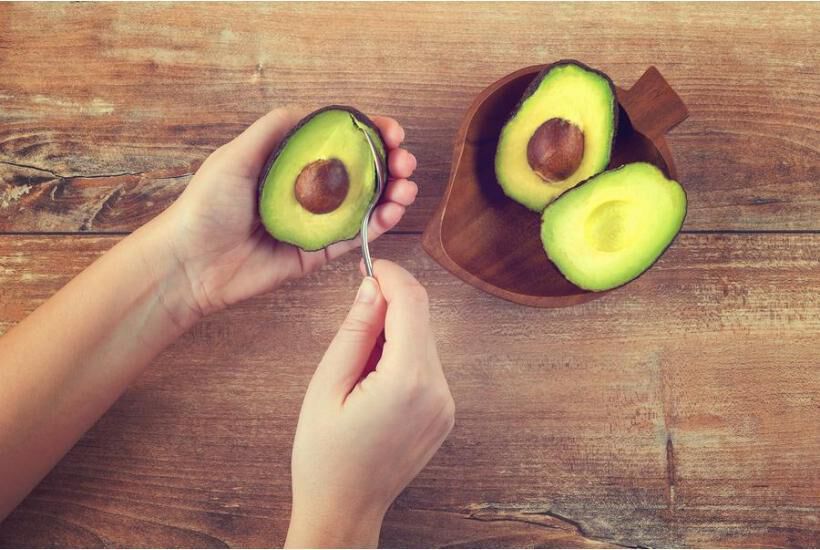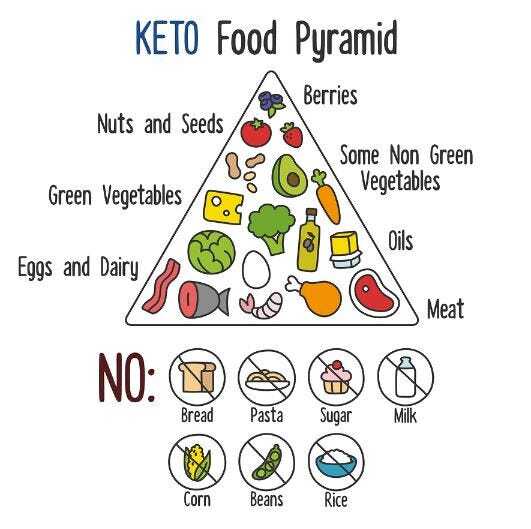WonderSlim and Ketogenic Diets Compared

WonderSlim and Ketogenic Diets Compared
Is a Ketogenic Diet Right for You?
Written by Kimberly A. Tessmer, RDN, LD
You may have heard of weight-loss diets that are referred to as "Ketogenic Diets" and are touted as the magic solution to quick and dramatic weight loss results! But are these diets completely safe and are they really that effective? Through a series of questions and answers I hope to help you grasp a better understanding of what these diets are all about and how they stack up to healthier and less risky ways of losing weight.
What is Ketosis?
Before you can understand what a ketogenic diet you need to be able to understand what  ketosis is. Ketosis is a metabolic process that occurs in the body when there is not enough glucose (or blood sugar), from carbohydrates, to be utilized for energy. Carbohydrates such as fruits, vegetables, sugar, whole-grains, beans, nuts and dairy foods are always the body’s first choice when it comes to fuel or energy. With little to no glucose, the body turns to breaking down stored fats to meet energy demands. This process results in the accumulation of acids in the body called ketones, which build-up in the blood and are eliminated through urine.
ketosis is. Ketosis is a metabolic process that occurs in the body when there is not enough glucose (or blood sugar), from carbohydrates, to be utilized for energy. Carbohydrates such as fruits, vegetables, sugar, whole-grains, beans, nuts and dairy foods are always the body’s first choice when it comes to fuel or energy. With little to no glucose, the body turns to breaking down stored fats to meet energy demands. This process results in the accumulation of acids in the body called ketones, which build-up in the blood and are eliminated through urine.
The problem with ketones in the blood is that high levels can be medically dangerous and can lead to a very serious life-threatening condition called ketoacidosis. Ketosis can take place in those following a ketogenic diet and is often seen in people with uncontrolled type 1 diabetes, when the body does not have enough insulin and/or is not using it efficiently.
How do Ketogenic Diets work?
Now that you have a better understanding of what ketosis is, understanding how ketogenic diets (sometimes referred to as low-carbohydrate or low-carb diets) work will be much easier. Although ketogenic diets are sometimes used under medical supervision to reduce seizures in epilepsy (especially in children), they are more popular as a way to facilitate quick and dramatic weight loss. Sounds about right since getting to a state of ketosis means the body is breaking down stored fat as I mentioned above.
Keto diets are not only extremely low in carbs, they are generally very high in fat. In addition, most keto diets used for weight loss are very low calorie diets (VLCD’s), meaning about 800 calories per day. In that respect it is not always easy to stick with these types of diets long-term. A low to no carbohydrate diet with minimal protein and high fat can have adverse effects on long-term health. Many foods that are high in fat and contain minimal protein and little to no carbohydrates can also be high in saturated fat and cholesterol, which can increase the risk for heart disease and other health issues. Following a VLCD and/or ketogenic diet is hardly consuming a balanced diet. Therefore, it can increase the risk for malnutrition by discouraging the intake of essential vitamins and minerals needed for good health.
In order for these types of diets to succeed, the body must enter a state of ketosis as I discussed above. Once the body enters this state, it loses water, sodium and potassium, which can bring on muscle loss, fatigue, dehydration and constipation and even begin to enter a type of starvation mode. Weight loss may happen quickly but much of what is lost initially is water weight. Even if you are able to continue losing weight on a ketogenic diet the problem occurs when the diet comes to its conclusion. Ketogenic diets are not safe long-term, therefore resuming regular eating habits afterwards can easily bring back much of the weight that was lost. Most of this weight will not come back as muscle mass but as stored fat.
Ketogenic diets are most definitely not for everyone. If you are an active person and have built up muscle you don’t want to lose (or simply enjoy eating), then a keto diet probably isn’t for you. Any time a ketogenic diet is used, whether it is a keto diet or a VLCD that is meant to bring on ketosis, it should be done ONLY under the close supervision of a physician. If you have ongoing medical issues, this will be even more vital.
What IS the healthiest and most effective way to lose weight?
It does not take something as drastic as a ketogenic diet and ketosis to lose weight. In fact there are much healthier, more effective and easier ways to manage weight. Though you have probably heard it over and over again, diet and exercise are the two most important components for successful weight loss and weight maintenance.
A good weight loss program needs to include a calorie-controlled yet healthy food plan that includes all of the food groups. Calories should not be so low that you are constantly hungry and feel as though you are being deprived. In addition, a diet too low in calories can cause ketosis and can cause precious muscle loss. The less muscle you have the slower your metabolism. Your intake of carbohydrates should be moderate and include carbs that are complex in nature versus those that include added sugar. Carbohydrates, especially those that are complex and full of fiber can help you feel fuller longer and give you the energy you need. Your intake of fat should be moderate as well and include only healthy fats such as monounsaturated and polyunsaturated fats.
Quality protein should always be included in any diet but especially when trying to lose weight. Protein can to help satisfy hunger and make you feel fuller longer because it takes longer to digest. When a protein food is paired with a complex carbohydrate-rich food such as whole-grain bread, fruit, potatoes, beans, nuts, brown rice, etc., it aids in slowing down the absorption of sugar into the bloodstream. This can help ward off those nasty cravings for foods you shouldn’t have. High quality protein can also help to promote muscle repair and growth, along with consistent exercise, and the more muscle we have the more calories we burn all day long.
Another helpful protein fact is that we need either protein and/or carbohydrates to help our body break down and use fat as energy. Having adequate protein in the diet helps our body to burn fat while maintaining calorie-burning lean muscle. As great as protein sounds it is important to keep in mind that protein alone is not the key to weight loss and shedding extra pounds. Consuming too much protein can lead to weight gain in the same way eating too much carbohydrate or fat can. Way too much protein in the diet over a long period of time can even lead to excessive strain on the kidneys and possible damage. The key is balance.
Along with a good balance of quality protein, complex carbohydrates, healthy fats and calorie-control meals, exercise is vital. Exercise will help to burn additional calories, burn fat stores and help you to build lean muscle, which in turn can help you to maintain a healthy weight down the line. The key to weight loss is making permanent changes. Whichever weight loss program you chose, you need to make changes that will last you a lifetime.
How Does WonderSlim Stack Up?

If the sound of a ketogenic diet doesn’t seem like your cup of tea and you are looking for a diet that is healthy and regimented yet effective, then the WonderSlim® Program may be what you are looking for. WonderSlim takes much of what I recommended in the section above and puts into one easy to follow program packed in a selection of diet kits that meet different individual needs.
One of the most difficult parts of weight loss for many people is figuring out what and how much to eat. With WonderSlim the menu is planned out for you and the WonderSlim products are portion controlled. The meal plans are well-balanced, including all of the food groups and including high quality protein that is so important during weight loss. High quality protein is supplied both through WonderSlim products and grocery store choices.
On this weight loss meal plan you eat every 2 to 3 hours, which keeps your blood sugar levels more stable, helping you to feel satisfied and decreasing cravings. One of the best parts of this program is that along with the WonderSlim meal replacements and supplements that you use daily in your plan, you also enjoy healthy grocery food selections at your evening meal. This helps to teach you what healthy foods are and how to choose foods that will support your weight management efforts as well as keep you healthy. It is perfectly fine to use a regimented program such as WonderSlim as long as you are learning along the way. You need to make changes to your food intake that will eventually become permanent if you are going to achieve successful weight loss and weight maintenance long-term and that should be your ultimate goal.
So the take away here is that you do not need something as drastic, risky and extreme as a ketogenic diet to lose weight successfully. You can follow a program that is less risky and still end up with the results you are looking for. The key is motivation, support, a healthy calorie-control/portion-control meal plan, balance and exercise. How you choose to lose the weight is ultimately your decision but be sure to research it well and understand what you are getting into.
Do not risk your health to lose weight. Lose weight to improve your health!
Kimberly A. Tessmer, RDN, LD is a Registered Dietitian Nutritionist and Licensed Dietitian in the State of Ohio as well as a published author. Kim has over 20 years experience in the field of nutrition and has authored nine books to date. Kim is also a member of the Academy of Nutrition and Dietetics as well as a member of the ADA Practice Group, Nutrition Entrepreneurs.
Kim has endorsed the WonderSlim Weight Management Program.
You should consult with a healthcare professional before starting any diet, exercise or supplementation program.